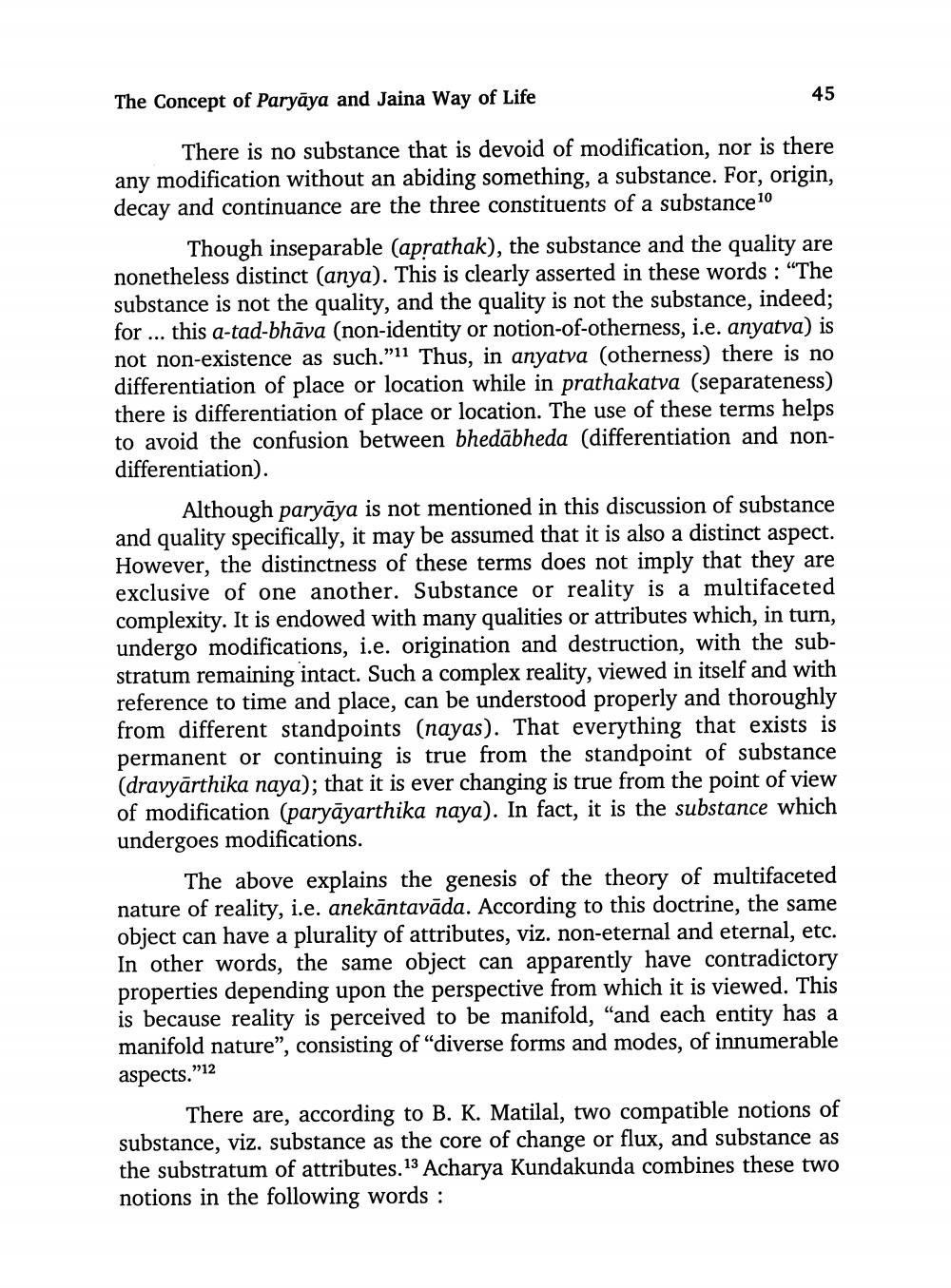________________ The Concept of Paryaya and Jaina Way of Life 45 There is no substance that is devoid of modification, nor is there any modification without an abiding something, a substance. For, origin, decay and continuance are the three constituents of a substance 10 Though inseparable (aprathak), the substance and the quality are nonetheless distinct (anya). This is clearly asserted in these words : "The substance is not the quality, and the quality is not the substance, indeed; for ... this a-tad-bhava (non-identity or notion-of-otherness, i.e. anyatva) is not non-existence as such."11 Thus, in anyatva (otherness) there is no differentiation of place or location while in prathakatva (separateness) there is differentiation of place or location. The use of these terms helps to avoid the confusion between bhedabheda (differentiation and nondifferentiation). Although paryaya is not mentioned in this discussion of substance and quality specifically, it may be assumed that it is also a distinct aspect. However, the distinctness of these terms does not imply that they are exclusive of one another. Substance or reality is a multifaceted complexity. It is endowed with many qualities or attributes which, in turn, undergo modifications, i.e. origination and destruction, with the substratum remaining intact. Such a complex reality, viewed in itself and with reference to time and place, can be understood properly and thoroughly from different standpoints (nayas). That everything that exists is permanent or continuing is true from the standpoint of substance (dravyarthika naya); that it is ever changing is true from the point of view of modification (paryayarthika naya). In fact, it is the substance which undergoes modifications. The above explains the genesis of the theory of multifaceted nature of reality, i.e. anekantavada. According to this doctrine, the same object can have a plurality of attributes, viz. non-eternal and eternal, etc. In other words, the same object can apparently have contradictory properties depending upon the perspective from which it is viewed. This is because reality is perceived to be manifold, "and each entity has a manifold nature", consisting of "diverse forms and modes, of innumerable aspects."12 There are, according to B. K. Matilal, two compatible notions of substance, viz. substance as the core of change or flux, and substance as the substratum of attributes. 13 Acharya Kundakunda combines these two notions in the following words :




